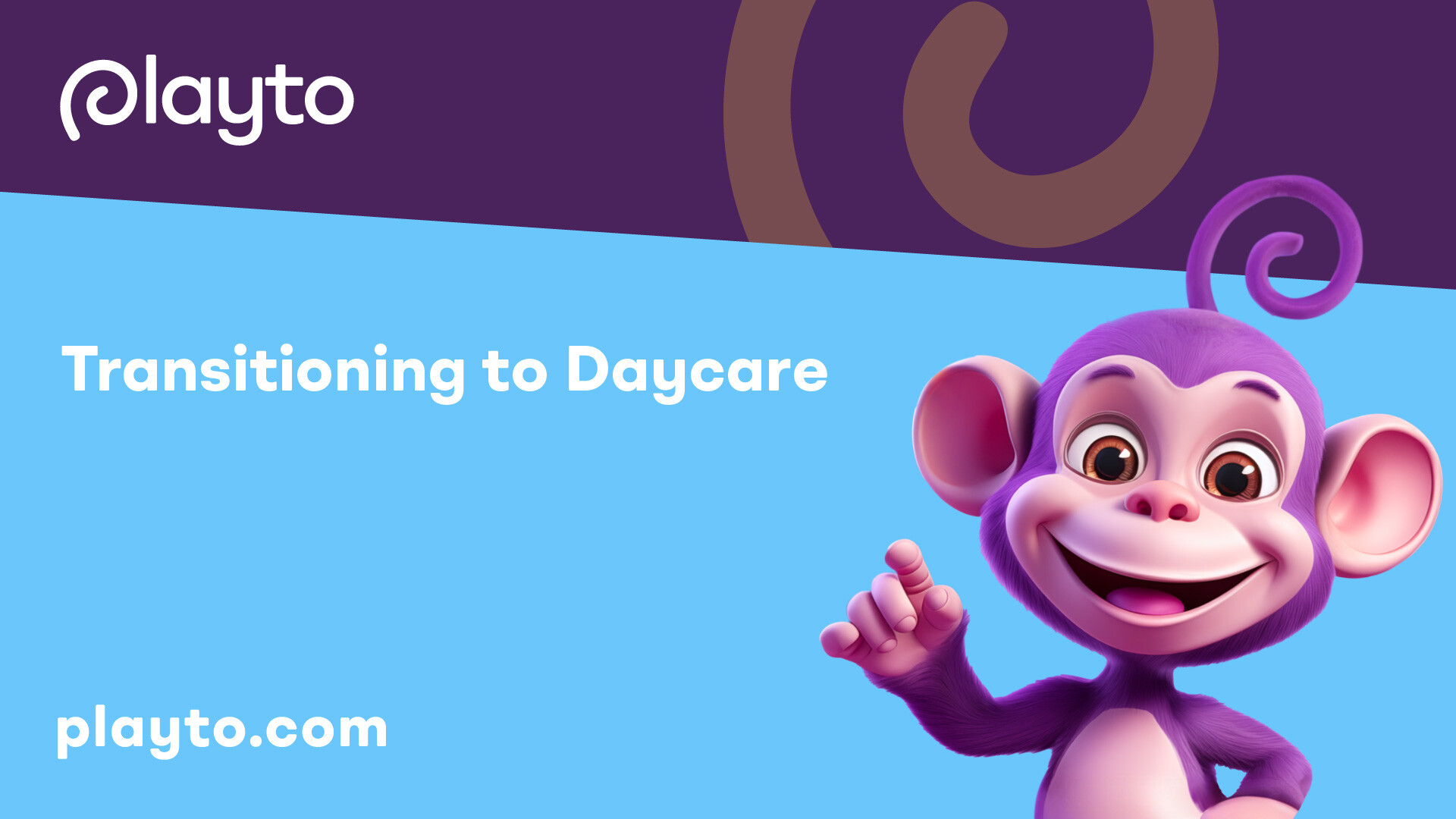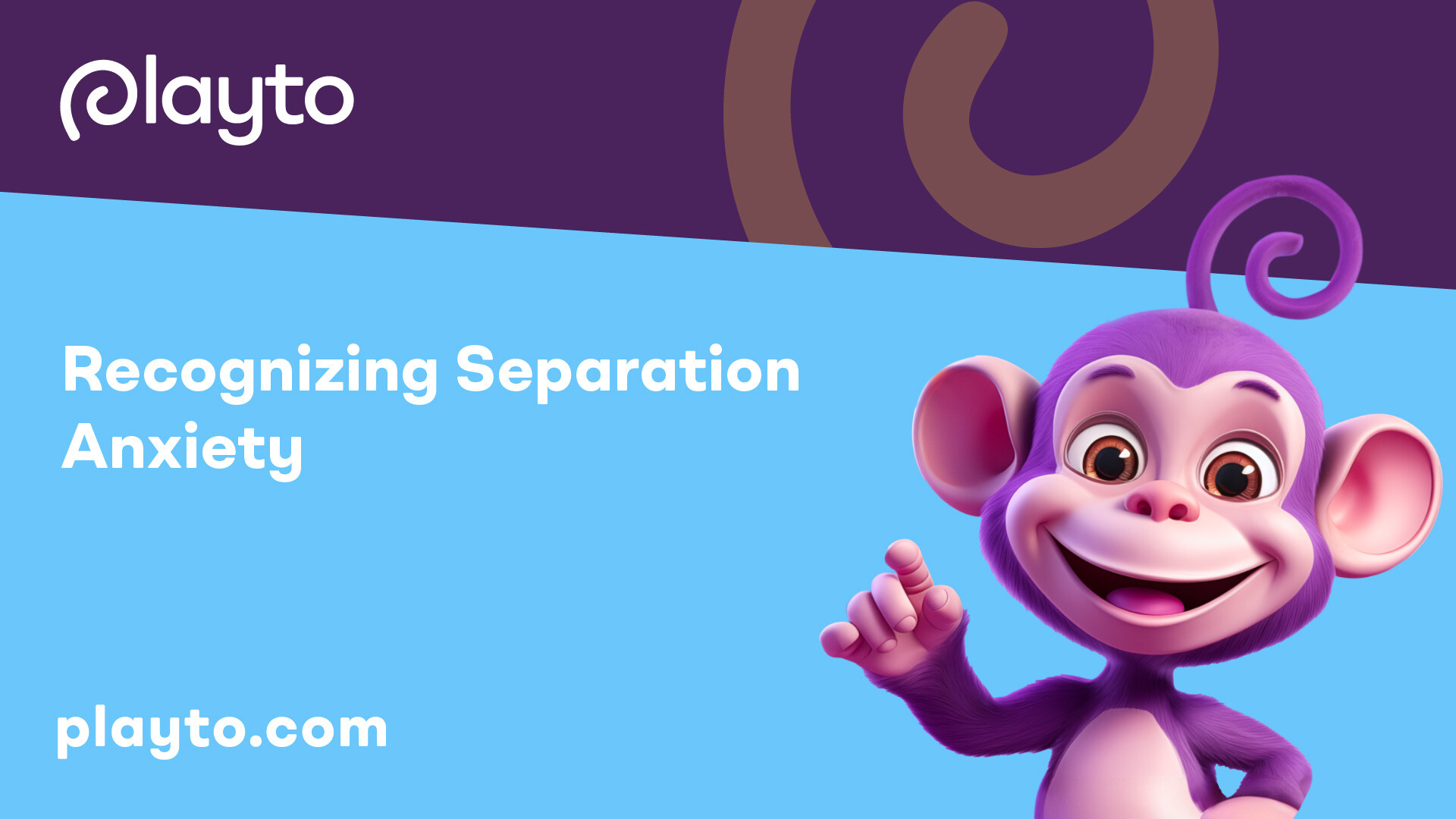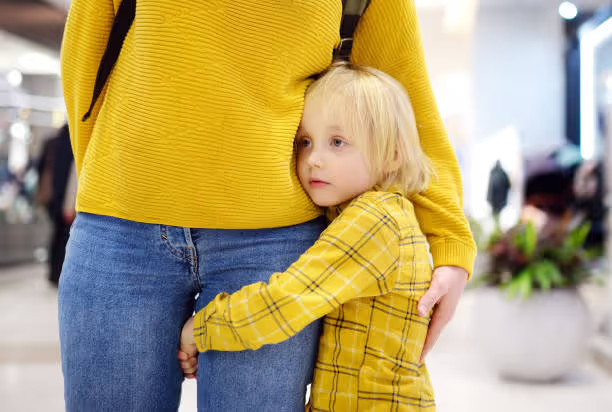Understanding Separation Anxiety
Separation anxiety is a natural and common experience for many infants and toddlers. It is a normal developmental phase that occurs when children start to recognize their independence and develop emotional attachments to their primary caregivers. In this section, we will explore the normal developmental phase of separation anxiety and the impact it can have on children.

Normal Developmental Phase
Separation anxiety typically begins around 10 to 18 months of age and can continue until a child is about 3 years old [1]. During this stage, children may experience anxiety or distress when separated from their parents or main caregivers. It is a manifestation of their emotional attachment and fear of being separated from those they trust.
Research suggests that separation anxiety increases until a child is about 15 months old and peaks at around 18 months. It is important for parents to understand that separation anxiety is a normal part of development and that it will pass. Remaining calm and reassuring can help children navigate this phase with greater ease.
Impact of Separation Anxiety
Separation anxiety can have a significant impact on both children and parents. For children, it can lead to distress, tears, clinginess, or resistance during transitions, such as drop-offs at daycare. They may exhibit increased fussiness when being held by unfamiliar individuals. However, it is important to note that separation anxiety is not a disorder, but rather a typical phase that many children go through.
Parents may also experience emotional challenges when their child is going through separation anxiety. They may feel guilty or anxious about leaving their child at daycare or experience frustration and sadness when witnessing their child's distress. It is essential for parents to be patient with themselves and their child during this phase and to seek support or guidance if needed.
Understanding that separation anxiety is a normal part of development can help parents and caregivers navigate through this phase with empathy and reassurance. By creating a comforting environment and implementing coping strategies, parents can help their child build trust and develop a sense of security. In the next sections, we will explore coping strategies for parents and discuss ways to address separation anxiety disorder.
Transitioning to Daycare
When it comes to transitioning a child to daycare, it's important to understand both the benefits of daycare and the challenges that come with the transition.

Benefits of Daycare
Daycare offers numerous benefits for children, making it an appealing option for many parents. One of the key advantages is the opportunity for socialization. According to Melbourne Child Psychology, socialization is not only enjoyable for children, but it is also a crucial aspect of normal development. Interacting with peers and caregivers in a structured environment can enhance a child's social skills, emotional regulation, and overall well-being. For more information on the socialization benefits of daycare for toddlers, check out our article on socialization benefits of daycare for toddlers.
Additionally, daycare can provide a stimulating and educational environment for children. Qualified caregivers and teachers create age-appropriate activities and learning opportunities that promote cognitive development, language skills, and creativity. This can help children develop a love for learning and establish a solid foundation for their future education.
Moreover, daycare offers benefits for working parents. It provides a reliable and safe environment for children while their parents are at work. This allows parents to focus on their jobs knowing that their child is well-cared for. For more information on how daycare supports working parents, refer to our article on how daycare supports working parents.
Challenges of Transition
Transitioning to daycare can be challenging for both parents and children. The separation anxiety experienced by children during this phase is a normal part of development. According to the Mayo Clinic, separation anxiety is a typical phase for many infants and toddlers, often causing tears at daycare drop-off or fussiness when a new person holds them. This phase usually improves by about 2 to 3 years of age. It is essential for parents to understand that separation anxiety is a natural manifestation of the child's emotional attachment to their primary caregiver. For more information on separation anxiety, refer to the section on recognizing separation anxiety in our article.
The challenges during the transition to daycare can be emotionally taxing for both parents and children. It's important for parents to be patient and supportive during this phase. Creating a comforting environment for the child, establishing routines, and gradually introducing the daycare setting can help ease the transition. Our article on coping strategies for parents provides helpful tips for navigating this challenging period.
By understanding the benefits of daycare and being prepared for the challenges of transition, parents can make informed decisions and support their child's adjustment to the daycare setting. Remember, each child is unique, and the transition experience may vary. With patience, understanding, and open communication with daycare providers, parents can help their child thrive in their new environment.
Recognizing Separation Anxiety
Separation anxiety is a common phase that many infants and toddlers experience, often causing distress or anxiety when separating from their parents or main caregivers. Recognizing the signs of separation anxiety is essential for parents and caregivers to provide appropriate support and understanding during this developmental stage.

Typical Signs
Children with separation anxiety may exhibit a range of behaviors that indicate their discomfort or distress when separated from their parents or caregivers. These signs can vary depending on the child's age, temperament, and individual circumstances. Some common signs of separation anxiety include:
- Crying or clinging when a parent or caregiver is about to leave
- Resistance or refusal to go to daycare or be with other caregivers
- Excessive worry or fear of being separated from loved ones
- Physical symptoms such as stomachaches or headaches in anticipation of separation
- Difficulty calming down or being consoled after separation
It is important to note that while these signs are typical, the intensity and duration of separation anxiety can vary from child to child. It is also important to distinguish between normal separation anxiety and separation anxiety disorder (SAD), which is characterized by more severe and persistent symptoms. For more information on SAD, refer to the section on "Addressing Separation Anxiety Disorder."
Different Ages, Different Reactions
The manifestation of separation anxiety can vary depending on the age of the child. Research suggests that separation anxiety increases until a child is about 15 months old and peaks at around 18 months. Here are some common reactions seen in different age groups:
Infants (6-12 months):
- Showing signs of distress or fussiness when a new person holds them
- Crying or becoming clingy when separated from their primary caregiver
- Seeking comfort and reassurance from familiar faces
Toddlers (1-3 years):
- Expressing fear or resistance when being dropped off at daycare
- Displaying separation-related tantrums or meltdowns
- Experiencing difficulty calming down after separation
- Demonstrating a need for increased physical contact and reassurance
It's important to remember that separation anxiety is a normal phase of development and most children outgrow it by the age of 2 to 3 years. Providing a supportive and comforting environment can help children navigate through this phase more smoothly.
Understanding the typical signs and reactions of separation anxiety is the first step in effectively supporting children through this developmental phase. By recognizing these signs and responding with empathy and patience, parents and caregivers can help children feel more secure and confident in their daycare environment.
Coping Strategies for Parents
When it comes to helping children cope with separation anxiety in daycare, parents play a crucial role in providing support and reassurance. Here are some helpful tips for parents to navigate this challenging phase and create a comforting environment for their child.
Helpful Tips for Parents
- Practice short separations: Gradually introduce short periods of separation from your child, gradually increasing the time away. This can help them become more comfortable with being apart and develop healthy coping mechanisms for separation anxiety. For example, start with leaving them with a trusted caregiver or family member for a short duration, and then gradually extend the time apart.
- Establish a goodbye ritual: Create a quick, positive goodbye ritual when dropping off your child at daycare. This ritual can be a special moment to connect before parting ways, providing comfort and confidence to your child. Consistency in this ritual can make each drop-off smoother and help alleviate separation anxiety [4].
- Communicate and set expectations: Be specific with your child about what will happen during the day at daycare. Share information about the activities they will engage in, when you will return, and any other relevant details. This can help ease their anxiety by providing reassurance and a clear routine. Keeping lines of communication open with your child and their daycare provider can also help address any concerns or questions they may have.
- Follow a consistent morning routine: Establishing a consistent morning routine before heading off to daycare can provide a sense of stability and familiarity for your child. Include activities such as dressing, brushing teeth, eating breakfast together, and saying goodbye with a hug and kiss. Following a routine can help children know what to expect and ease their anxiety. Additionally, it teaches children about independence and gives them a sense of control over their day.
Creating a Comforting Environment
Creating a comforting environment at home can also contribute to easing separation anxiety for children in daycare. Here are some strategies that can help:
- Maintain a warm and supportive atmosphere: Provide a nurturing and loving environment at home to help your child feel secure. Offer plenty of affection, praise, and reassurance. This can build their confidence and resilience in managing separation anxiety.
- Establish consistent routines: Consistency in daily routines, such as meal times, nap times, and bedtime, can provide a sense of stability for your child. Knowing what to expect helps them feel secure and reduces anxiety.
- Encourage open communication: Create a safe space for your child to express their feelings and concerns. Encourage them to talk about their experiences at daycare and listen attentively. Validate their emotions and provide comfort and guidance when needed.
- Stay involved with daycare activities: Stay connected with your child's daycare by participating in parent-teacher meetings, events, and activities. This involvement can help you understand your child's experiences better and foster a sense of collaboration with the daycare staff.
Remember, separation anxiety is a normal developmental phase, and with time and support, most children overcome it. By implementing these coping strategies and creating a comforting environment, parents can help their child navigate separation anxiety and thrive in their daycare experience.
Addressing Separation Anxiety Disorder
For some children, separation anxiety can go beyond the typical developmental phase and develop into separation anxiety disorder (SAD). It is important for parents and caregivers to be able to identify the symptoms of SAD and understand the available treatment options.
Identifying SAD Symptoms
Separation anxiety disorder can be identified as early as preschool age. Children with SAD experience intense and ongoing anxiety that is more severe or lasts longer than expected. The anxiety interferes with their daily activities and may involve panic attacks or other problem behaviors.
Symptoms of separation anxiety disorder include:
- Excessive distress when faced with separation from a parent or caregiver.
- Worrying excessively about the well-being of a loved one.
- Reluctance or refusal to go to school or other places where separation is required.
- Physical symptoms such as headaches, stomachaches, or nausea related to separation anxiety.
- Nightmares or other sleep disturbances related to separation anxiety.
It is important to note that separation anxiety disorder is diagnosed when the symptoms are more severe or persistent than expected for someone's developmental age and cause significant distress or problems in daily activities. If you suspect your child may be experiencing separation anxiety disorder, it is recommended to seek help from a pediatrician or healthcare professional for a proper evaluation.
Treatment Options
Separation anxiety disorder usually requires treatment as it may not go away on its own and can lead to panic disorder and other anxiety disorders in adulthood. The primary goal of treatment is to help children manage their anxiety and develop coping strategies.
The treatment options for separation anxiety disorder may include:
- Therapy: Cognitive-behavioral therapy (CBT) is often used to treat separation anxiety disorder. It focuses on helping children identify and challenge their anxious thoughts and develop effective coping mechanisms. CBT may involve individual therapy sessions or family therapy sessions to involve parents in the treatment process.
- Parental involvement: Parents play a crucial role in supporting their child with separation anxiety disorder. They can learn strategies to help their child manage anxiety, create a secure and comforting environment, and gradually expose their child to separation in a supportive manner.
- Medication: In some cases, medication may be prescribed to manage severe anxiety symptoms associated with separation anxiety disorder. Medications such as selective serotonin reuptake inhibitors (SSRIs) may be used in conjunction with therapy to alleviate symptoms.
It is important to consult with a healthcare professional to determine the most appropriate treatment plan for your child. They will evaluate the severity of the symptoms and provide guidance on the best course of action.
By identifying the symptoms of separation anxiety disorder and seeking appropriate treatment, parents can support their children in managing their anxiety and promoting healthy emotional development.
For more information on daycare, check out our related articles on how daycare supports working parents, socialization benefits of daycare for toddlers, nutrition guidelines for daycare centers, and the importance of outdoor play in daycare settings.
Supporting Children at Daycare
When it comes to supporting children with separation anxiety at daycare, there are various strategies that can help ease their transition and provide them with a sense of security. Two important aspects to focus on are coping strategies and building trust and routine.
Strategies for Coping
Parents can implement several strategies to help their children cope with separation anxiety at daycare. Here are some helpful tips:
- Establish a Quick, Positive Goodbye Ritual: Creating a special goodbye ritual before parting ways can help your child feel more comfortable and confident. This ritual can involve a moment of connection, such as a hug, a kiss, or a special handshake, which can make each drop-off smoother.
- Provide Clear Communication: Being specific with your child about what will happen during the day at daycare, including activities and when you will return, can help ease their anxiety. Providing reassurance and a clear routine can be beneficial in reducing their worries [4].
- Maintain a Consistent Morning Routine: Encouraging a consistent morning routine before heading off to daycare can help children know what to expect and ease their anxiety. Activities like dressing, brushing teeth, eating breakfast together, and saying goodbye with a hug and kiss can provide a sense of security. Following a routine can also teach children about independence.
Building Trust and Routine
Building trust between the child, parent, and caregiver is essential. Here are some strategies to help foster trust and routine:
- Share Information with Caregivers: Providing caregivers with information about your child's preferences, fears, and habits can help ease the transition. This allows caregivers to better understand and support your child's needs in the daycare setting. Open communication and sharing important details can contribute to a smoother separation process.
- Allow Witnessing of Friendly Relationships: Allowing your child to witness a friendly relationship being built between you and the caregiver can help establish trust. Children often use their parents as a "bridge" for developing trust with new adults. Seeing a positive interaction between you and the caregiver can reassure your child that they are in a safe and caring environment [5].
- Create Predictable Routines: Establishing predictable routines at daycare can provide a sense of stability for your child. Consistent schedules for activities, meals, naps, and playtime can help children feel secure and understand what to expect throughout the day. Predictability and routine can help reduce anxiety and reinforce a sense of safety [5].
By implementing these strategies and focusing on building trust and routine, parents can support their children in navigating separation anxiety at daycare. Remember, each child is unique, and it may take time for them to adjust. Providing patience, reassurance, and consistent support can make a significant difference in helping children feel more comfortable and confident in their daycare environment.
